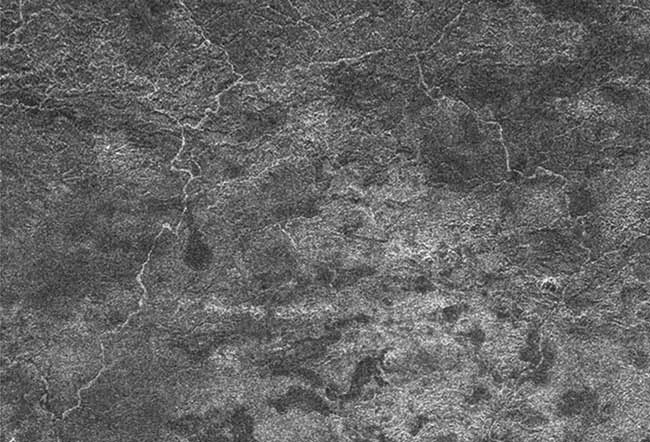Patch of Saturn's Moon Resembles Earth

New radar images of Saturn's moon Titan revealdunes, hills, valleys and rivers that scientist say look a lot like home.
But on Titan, which is frigid and shrouded insmog, the features are likely carved in ice rather than solid ground.
The detailed view is of a bright area on Titancalled Xanadu.It's about the size of Australia and has been studied from afar for years. Nowscientists are getting a better look with NASA's Cassini spacecraft. Radar is bouncedoff the surface to generate an image that cannot be made using visible-lightobservations because the orbiting spacecraft can't see through the moon's thickatmosphere.
The observations reveal mountains about as highas the Appalachians.
"Surprisingly, this cold, faraway regionhas geological features remarkably like Earth," said Jonathan Lunine, aCassini researcher at the University of Arizona.
The river channels are likely carved by liquidmethane or ethane, as the moon is too cold for water to be liquid.
"Although Titan gets far less sunlight and ismuch smaller and colder than Earth, Xanadu is no longer just a mere brightspot, but a land where rivers flow down to a sunless sea," Lunine said.
Get the Space.com Newsletter
Breaking space news, the latest updates on rocket launches, skywatching events and more!
Liquid methane might fall as rain or tricklefrom springs to create the rivers, Lunine and his colleagues figure. Perhapsthe rivers carry grains of material that accumulate as dunes elsewhere.
"This land is heavily tortured, convolutedand filled with hills and mountains," said Steve Wall, the Cassini radarteam's deputy leader at NASA's Jet Propulsion Laboratory. "Xanadu has beenwashed clean. What is left underneath looks like very porous water ice, maybefilled with caverns."
Image Gallery: Imagining Saturn and Titan
Image Gallery: Cassini's Latest Discoveries
Cassini Sees Xanadu on Saturn's Moon Titan
Join our Space Forums to keep talking space on the latest missions, night sky and more! And if you have a news tip, correction or comment, let us know at: community@space.com.

Space.com is the premier source of space exploration, innovation and astronomy news, chronicling (and celebrating) humanity's ongoing expansion across the final frontier. Originally founded in 1999, Space.com is, and always has been, the passion of writers and editors who are space fans and also trained journalists. Our current news team consists of Editor-in-Chief Tariq Malik; Editor Hanneke Weitering, Senior Space Writer Mike Wall; Senior Writer Meghan Bartels; Senior Writer Chelsea Gohd, Senior Writer Tereza Pultarova and Staff Writer Alexander Cox, focusing on e-commerce. Senior Producer Steve Spaleta oversees our space videos, with Diana Whitcroft as our Social Media Editor.








